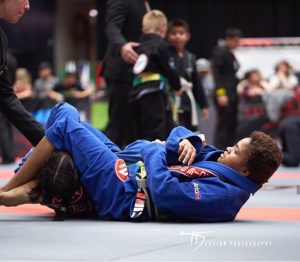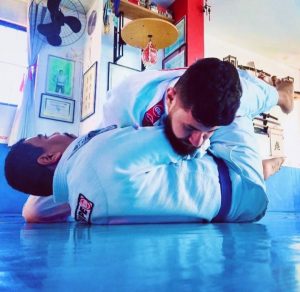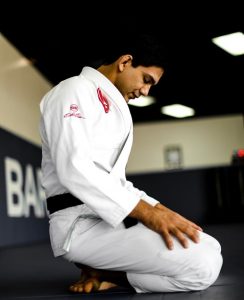9 Golden Rules of Jiu-Jitsu
Beyond the techniques of Jiu-Jitsu there are pieces of wisdom – or Golden Rules – that seem to be common in Jiu-Jitsu schools every where in the world. Step on the mats in a Gracie Barra school somewhere in the world and you are likely to hear one of the below pieces of Jiu-Jitsu wisdom.
ㅤ
These rules have endured because they contain valuable knowledge about the experience of learning and training Jiu-Jitsu over many years and different students. This is by no means a comprehensive list, but I hope you will enjoy these 9 rules.
ㅤ
1- Do not directly contest strength against strength. If you “lock horns” with bigger, stronger opponents you are certain to lose. Look to go around your opponents resistance by changing angle, direction or using action / reaction to use their momentum against them. In fact, making use of the action / reaction principle might be the single most significant change you could add to your Jiu-Jitsu.
ㅤ

2- Seek maximum efficiency in your Jiu-Jitsu by putting the strength of your largest, strongest muscle groups against the smaller, weaker, more vulnerable parts of your opponents body. A perfect example of this rule is the straight armlock from Mount or guard in which the hips apply a breaking force to the relatively weaker joint of your opponents elbow. Timing, leverage and selecting the correct technique for the situation are also ways to be most efficient. How else can a smaller, weaker opponent hope to beat a heavier, stronger opponent?
ㅤ
3- Respect the tap. This means 2 different but important things. First, always release a submission as soon as your opponent taps to signal to stop. Training in Jiu-Jitsu is based around mutual respect and keeping our training partners safe. We trust our training partners to keep us safe and we cannot break that trust. Secondly, “tap early and often” the saying goes. If you are caught in a submission, just tap and prevent unnecessary damage to your body and try again.
ㅤ

4- There is no losing in Jiu-Jitsu, only learning. This rule relates to our previous rule: tapping is part of training. Ok, no one WANTS to tap during rolling, but it is counter productive to view rolling as a contest. You try the techniques that you learned in class and through trial and error, learn what works and what doesn’t work quite so well. If we look at rolling as a learning tool and not as a proof of our worth as a student of Jiu-Jitsu, training is not only more fun, but more productive.
ㅤ
5- Position before submission. This is another piece of Jiu-Jitsu wisdom that endures. Primarily it means that in a match, the Jiu-Jitsu fighter must first obtain a favorable position (ex. Side Mount or Back Mount) before looking for the submission attack. This is easier said than done! It might be tempting to attempt a submission from an inferior position (ex. while under side Mount or when someone has your back) but these are much lower percentage and the exception to the rule. Additionally, it means that we should focus more on the skills to get to dominant positions and less on drilling the final submission. If you can’t actually get to a dominant position, you aren’t even going to get a chance to try that submission.

ㅤ
6- Survive and then win. This bit of Jiu-Jitsu philosophy is credited to Grandmaster Helio Gracie. He believed that a Jiu-Jitsu fighter’s strategy should first be to defend and protect themselves. As the opponent became frustrated in their attempts to attack, they would start to fatigue and commit fatal mistakes. After weathering the initial storm, the Jiu-Jitsu fighter could seize the opportunity to submit the opponent.
ㅤ
7- True skill comes from mastery of the fundamentals. If you follow popular Jiu-Jitsu social media accounts you will no doubt see spectacular and fancy technique videos that are dazzling displays of creativity, fluid movement and complex positions. These displays are interesting to watch but ask yourself: how often do you see these elaborate techniques actually work in competition against other skilled Jiu-Jitsu fighters? Not often. Matches at a high level are predominantly won by “basic” techniques like rear naked choke or Guillotine chokes.
ㅤ

8- A black belt is a white belt who never gave up. This little piece of wisdom conveys the truth that the path to black belt is a LONG one. Mastery of Jiu-Jitsu is a marathon not a Sprint. Many ups and downs along the way – injuries, slumps, interruption of training, personal set backs – all which require perseverance and discipline over a long period of time. It isn’t about natural talent or training everyday, instead it is about resilience, sustained effort and love of the art.
ㅤ
9- Jiu-Jitsu is about respect. The traditional martial arts have the value of respect as a central part of their culture since their origins. And this remains true in Jiu-Jitsu today.
Respect comes in different forms. Respect for the founders of the art – we all stand on the shoulders of giants. The great masters and innovators before us that developed the art through their efforts involving their very blood sweat and tears.
Respect for our instructor who shares his knowledge and creates the culture of the Gracie Barra school where we make friends, get strong and better our lives through Jiu-Jitsu.
And let’s not forget our training partners and opponents in competition that give us the opportunity to test ourselves. We could not learn and get better without them.

ㅤ
What is your personal favorite “Golden Rule” of Jiu-Jitsu?
ㅤ
See also on Gracie Barra : The 3 Types Of Training Partners We Need
Credits: Mark Mullen
Gracie Barra Black belt based in Asia
